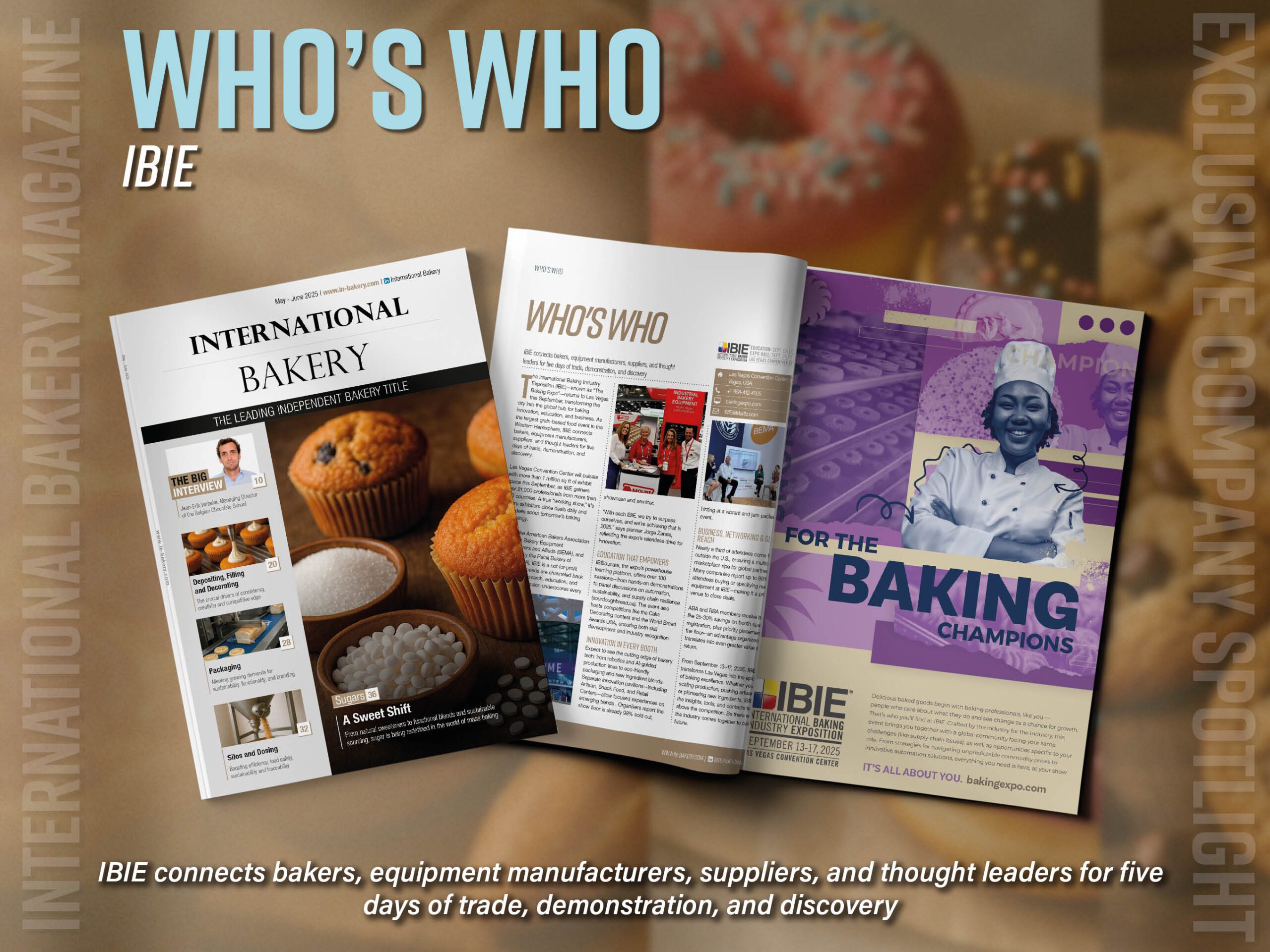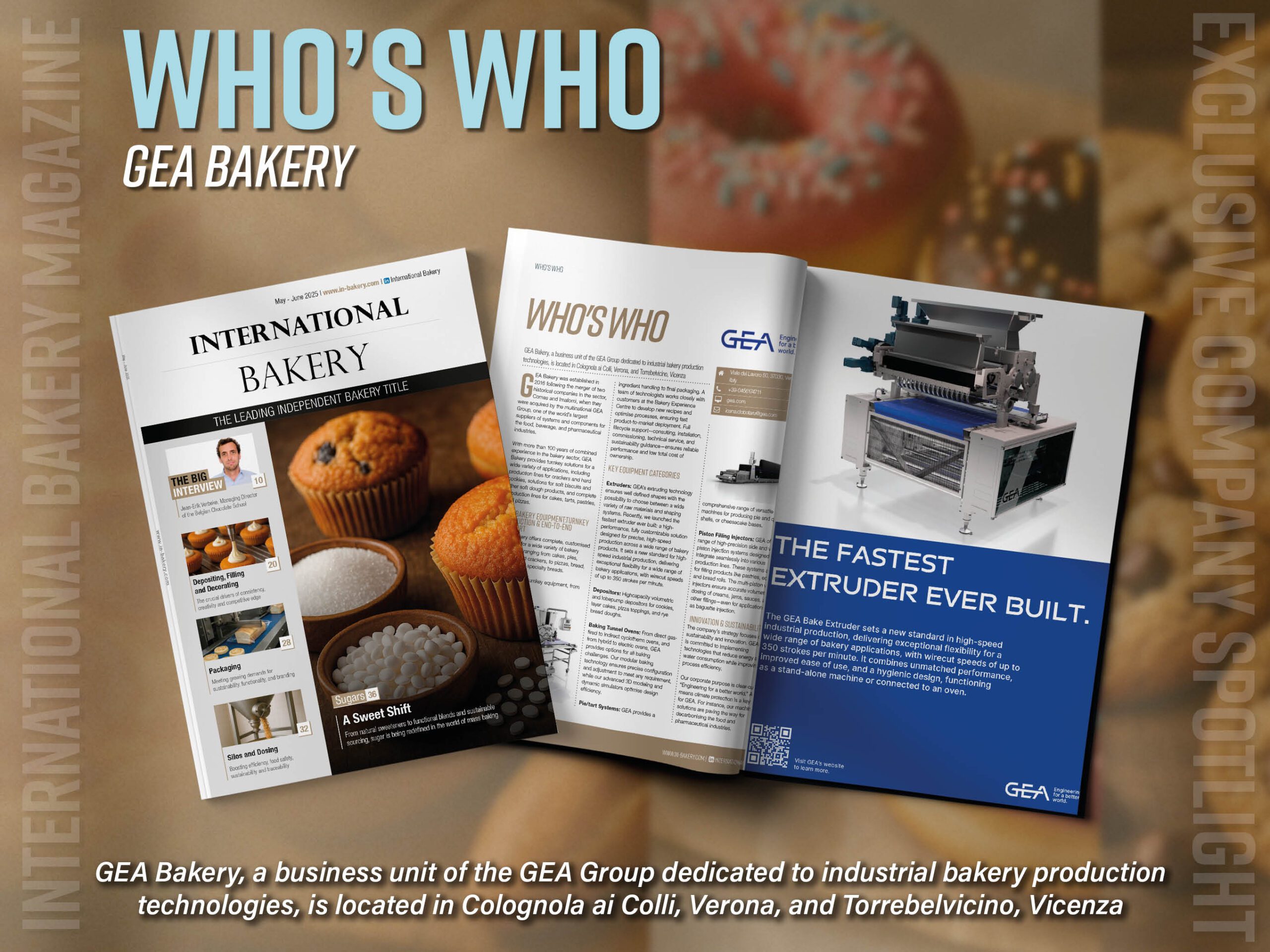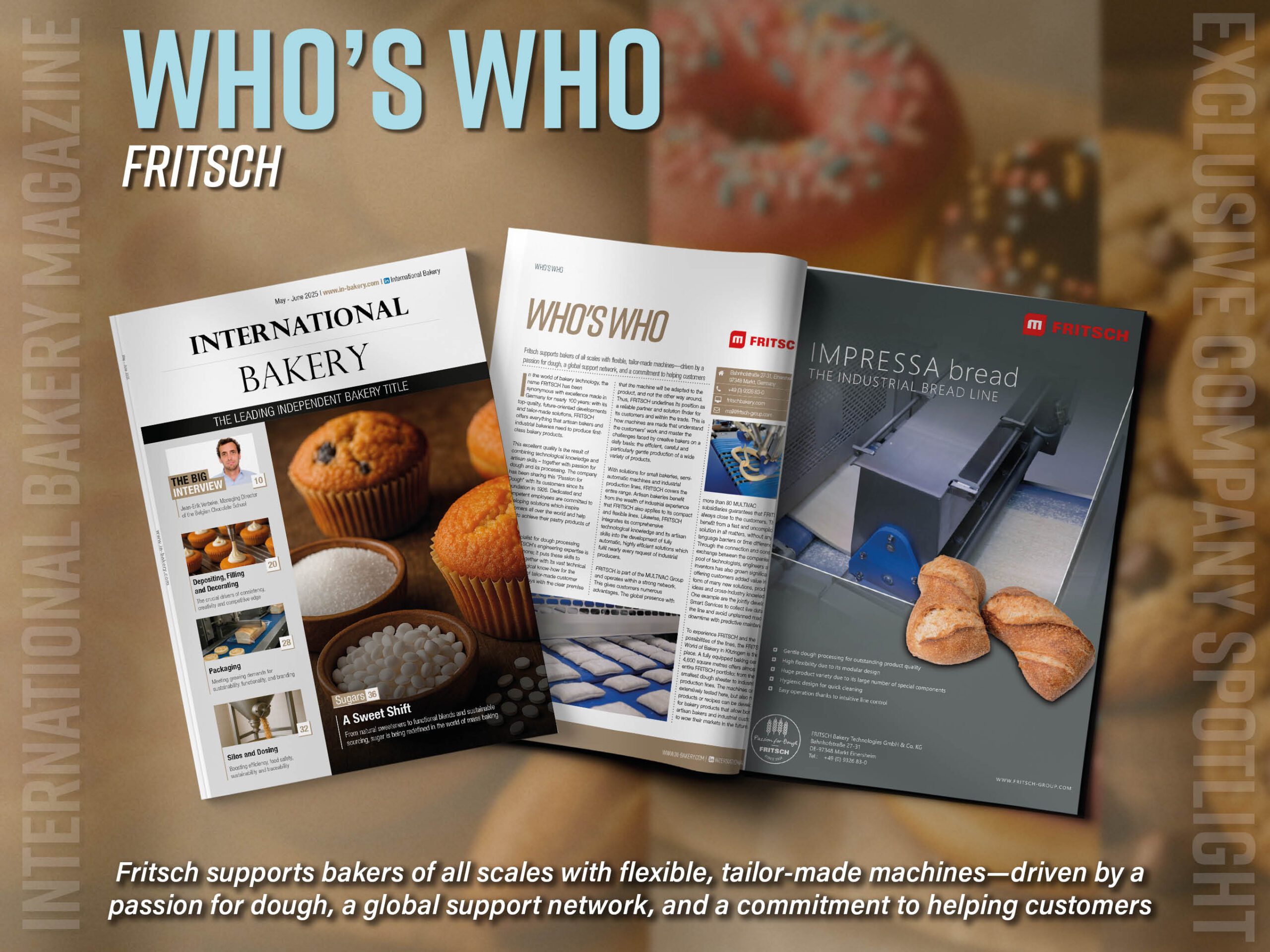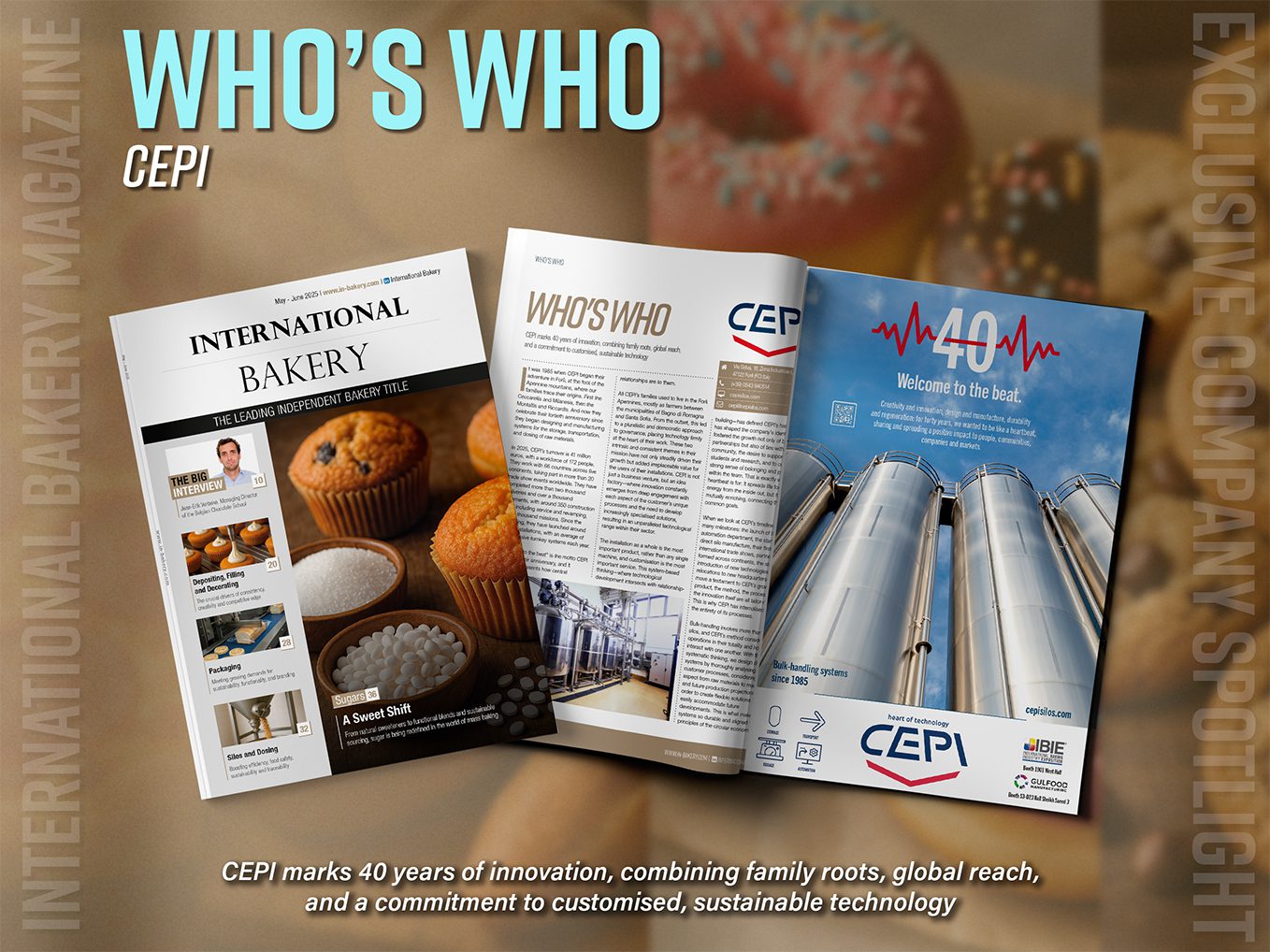International Bakery Managing Editor Rebecca Spayne explores the key principles to ensure effective storing and dosing, highlighting the latest trends and innovations on offer
The commercial baking industry is fast-paced and highly competitive, relying heavily on precision and efficiency in ingredient handling to maintain product quality and consistency. In this context, silos and dosing systems are integral components of modern bakery production lines, offering advanced solutions for storing and measuring ingredients. Bakers must be fully aware of the core principles of storing and dosing, as well as the current technologies available and future trends on the horizon.
Maintaining Quality
When storing key bakery ingredients such as flavourings and colours, maintaining their quality and effectiveness depends on precise environmental control. Temperature regulation is critical; keeping flavourings and colours consistently cool helps prevent them from losing potency or altering in composition. Excessive heat can cause flavourings to evaporate or diminish in intensity, while colours may fade or change hue. Recognising these fundamental principles, companies like Dawn Foods and Puratos have invested in advanced climate control systems for their storage facilities. These systems ensure that flavourings and colourings remain stable and effective over time.
Effective humidity management is equally crucial, as excess moisture can adversely affect both powdered and liquid ingredients, causing clumping or dilution, respectively. Major industry players such as General Mills and AB Mauri combat this issue by employing dehumidifiers and moisture-control technologies to protect ingredient integrity.
Protecting ingredients from light exposure is another vital consideration, as it can lead to chemical changes that reduce their effectiveness. Storing flavourings and colours in opaque or dark containers helps mitigate this risk. Cargill, for example, uses specially designed light-blocking containers to maintain ingredient quality.
Preventing contamination is equally paramount. Properly sealed food-grade containers are essential to prevent cross-contamination from other substances or microorganisms. Employing a first-in, first-out (FIFO) inventory system ensures that older stock is used before newer stock, preserving ingredient freshness. Leading bakeries such as Flowers Foods and Bimbo Bakeries USA implement rigorous quality control measures and advanced inventory management systems to achieve this.
Bulk Handling and Raw Materials
Bulk handling plays a significant role in bakery operations, particularly for raw materials like flour, sugar, and grains. Bulk storage facilities are designed to accommodate large quantities efficiently, with considerations for optimal environmental conditions. Temperature and humidity control are critical in these facilities to maintain the quality and usability of raw materials.
Handling raw materials requires careful planning and execution to minimise waste and ensure consistency in product quality. Companies often utilise specialised equipment such as silos and pneumatic conveyors for efficient bulk material handling. These systems streamline the transfer of ingredients from storage to production lines, reducing manual handling and potential contamination risks.
For powdered ingredients, maintaining dry conditions is paramount. Air-tight storage containers prevent moisture absorption and clumping, preserving texture and usability. Stable, cool temperatures further extend shelf life. Liquid ingredients, on the other hand, demand sealed containers to prevent evaporation and contamination. Refrigeration is often employed to maintain stability and ensure consistent quality. Barry Callebaut, for instance, utilises refrigeration units for liquid chocolate and flavourings. Some liquid ingredients may require periodic agitation to maintain uniformity, as components can settle over time. Companies like Kerry Group employ automated stirring mechanisms in their storage tanks for homogeneous liquid flavourings. This meticulous approach not only safeguards ingredient longevity and quality but also enhances overall bakery efficiency and productivity.
Technical Challenges
When it comes to overcoming the technical challenges associated with storing flavourings and colours, bakeries implement several strategies. Regular monitoring of storage conditions, including temperature, humidity, and light exposure, is crucial to ensure that ingredients remain within optimal ranges. Sensitive ingredients like flavourings and colours are particularly susceptible to environmental fluctuations, which can lead to degradation and loss of quality. The use of high-quality food-grade packaging materials that provide effective barriers against light, air, and moisture is also vital. High-barrier packaging films from companies like Amcor and Sealed Air can significantly extend the shelf life of these ingredients by protecting them from external contaminants and environmental changes.
Effective inventory management systems are another key component in addressing these challenges. These systems track the shelf life and usage rates of ingredients to prevent spoilage and waste, utilising sophisticated software to manage inventory in real time. By doing so, bakeries can ensure that ingredients are used before they expire, reducing waste and maintaining product quality. Furthermore, training staff on the proper handling and storage procedures for sensitive ingredients is essential. Recognizing this need, leading bakeries often invest in comprehensive training programs to educate their employees on the importance of proper storage techniques and the utilisation of advanced equipment.
In addition to packaging and inventory management, specialised storage units with integrated temperature and humidity controls have become essential for maintaining the quality of sensitive ingredients. These units ensure that ingredients are stored within optimal conditions, thus preventing degradation. This is particularly important for liquid ingredients, as they can be more vulnerable to fluctuations in temperature and humidity. Equipment designed with hygienic features, such as easy-to-clean surfaces and minimal crevices, aids in maintaining cleanliness and preventing contamination.
Read more latest industry news and developments in our free to download magazine.
Never miss a story… Follow us on:
International Bakery
@int_bakery
@Bakeryint
Media contact
Joseph Clarke
Editor, International Bakery
Tel: +44 (0) 1622 823 920
Email: editor@in-bakery.com






